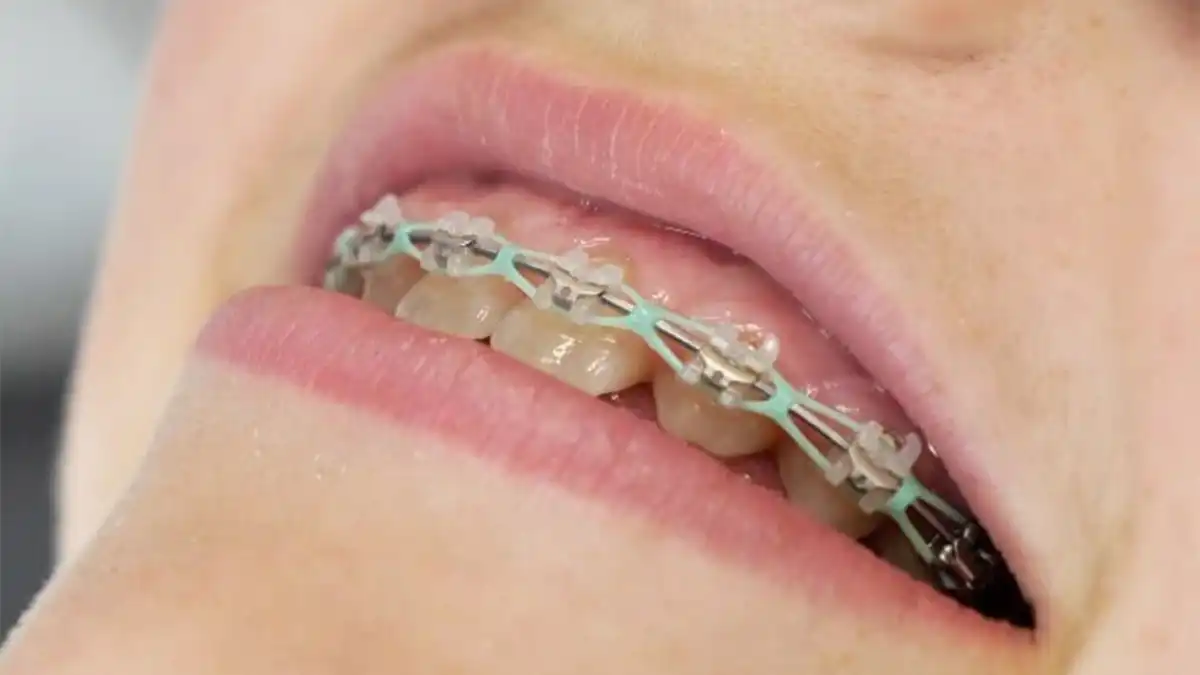Why Are My Gums Swollen with Braces?


If you or your child is new to wearing braces, there’s a good chance that you’ll have a run-in with swollen gums. With braces, there are more areas to clean around and extra spots for plaque to hide. When that plaque isn’t cleaned off all the way each day, you’ll start to see signs of gingivitis, like swollen gums around braces, brackets, and wires. Fortunately, swollen gums with braces is easily treated as long as you’re patient and you know what you’re doing.
Common Symptoms
When you have swollen gums around braces, you’ll tend to notice gingival tissues that are puffiest where they’re close to your appliances. First, the edges of the gums will start to flare up. The “papilla” (pointed gum tissue between teeth) may go from smooth and flat to blunted or bulbous. Assuming that it’s due to gingivitis, you’ll probably also see some bleeding and redness.
The biggest warning sign to look for is plaque buildup. If you can see a filmy buildup of biofilm along the gums or around each bracket, it’s just a matter of time before swollen gums with braces are going to be a problem.
Common Causes
1) Gingivitis
Symptoms
Gums appear puffy, red, and bleed easily. They are often tender to the touch. In aggressive cases, the gums might actually be so swollen that they appear to grow over and around your braces.
Treatment
Practice proper brushing and flossing methods. Work with your dental hygienist to identify special tools for cleaning around braces effectively, such as proxy-brushes or water flossers. You might even want to consider more frequent dental cleanings (such as every 3-4 months instead of every 6) while you’re in braces. Bottom line: don’t dismiss the swelling as something that will go away once your braces come off. The last thing you want is a bad case of gum disease or “white spots” on your teeth because of all of the plaque that’s been hanging out.
2) Teeth Movement
Sometimes when your teeth get moved around (I mean, that is what braces are supposed to do,) the soft tissues between them can get pushed together a little bit. If that happens, it might seem like the gingiva in one area looks puffy or swollen. The key is to make sure it’s not red or actually inflamed.
Symptoms
This scenario will usually cause what looks like swollen gums between a couple of teeth. More than likely it will be one or two specific areas, because of those teeth being brought in together and sort of “squishing” the tissues between them. In these scenarios, you won’t see the same tenderness, redness, or bleeding that you do with gingivitis.
Treatment
Clean the area thoroughly each day, as the excess tissue may tend to collect more plaque. Typically, your body will respond over time and the tissue will find a balance when it comes to where it’s supposed to be. If it doesn’t, you can talk to your dentist about a gingivectomy or some laser gum recontouring.
3) Hormones/Puberty
Hormonal changes can frequently cause gingivitis-like symptoms, especially during pregnancy or menses. As hormone levels shift, the gum tissues sometimes start to feel puffy, tender, or look swollen. The good news is that it’s temporary. And fortunately, it only affects a small percentage of women.
Symptoms
Hormone-induced swollen gums tend to be most prevalent during your monthly cycle or pregnancy. In some women the swelling is so bad that it creates large, bulbous-type growths referred to as “pregnancy tumors.” The good news is that they usually go away you give birth. Symptoms mirror traditional gingivitis. If you’re in orthodontics, you might see bleeding or swollen gums around braces and other appliances.
Treatment
Practice good oral hygiene and schedule routine dental cleanings (even if you’re pregnant.) If the tissue overgrowth interferes with your diet, ask your dentist about having the “pregnancy tumors” removed. Otherwise, it’s typically best to just let time run its course. Just be sure not to slack off on your oral hygiene and dismiss the condition as hormone-related. There’s a greater chance that your swollen gums around braces are due to classic gingivitis-like infections.
4) Gingival Hyperplasia
Symptoms
A typical hyperplasia case is usually linked to specific types of medications. Since some prescription drugs are known for causing gummy overgrowth, always share your health history with your dentist or orthodontist (especially before you get braces put on your teeth!) Medications like anticonvulsants and calcium channel blockers are some of the biggest offenders. Hyperplastic tissue won’t have the same red appearance or bleed easily like a gingivitis infection does.
Treatment
Do not discontinue your medication regimen without discussing it with your doctor. If you do, it won’t necessarily make the gum tissue swelling go down. You’ll likely want to talk to your dentist about scheduling a gingivectomy or some type of cosmetic gum contouring if your gum tissues are interfering with everyday activities or the way your smile looks.
5) Allergic Reaction
Although rare, some people still experience hypersensitivity to the hypoallergenic materials used in braces. Especially if you have an extreme metal allergy. Even if you’re sensitive to metallic jewelry it’s quite rare to have an allergic reaction to braces. However, it’s not unheard of.
Symptoms
Gums will typically feel tender, or you’ll have swelling where the braces are closest to your gingival tissue. They may not bleed, but they’ll be puffy or might even itch.
Treatment
Normally, severe metal allergies will require removing your stainless-steel orthodontic appliances and replacing them with another type of braces, such as ceramic/tooth-colored appliances or removable clear aligners.
Preventing Swollen Gums With Braces
Start by brushing above your braces, between brackets, and near your gumlines. Make sure you’re getting down into the bracket as well as up into the gums. This process can take some practice. Then, brush between each bracket with a “proxy-brush” (it looks like a Christmas-tree-shaped pipe cleaner). Rub gently against the side of each bracket and near the papilla. And don’t forget to brush the other side of your bracket, near the tip of your tooth.
Your toothbrushing is only about 2/3 of the process. You also need to clean up under the gum tissues, where more plaque is hiding. Using a floss threader and strand of floss, guide it under the wire between your teeth. Gently hug the side of each tooth as you rub up and down under the gumlines.
You can also consider using a water flosser. Even though they’re messier, you can easily trace your gumlines and flush out areas between your teeth. Some water flossers even have extra orthodontic tips to use. They’re great for cleaning around swollen gums with braces.
How To Soothe Swollen Gums Pain With Braces
Bottom line, you need to eliminate the source of the infection. Usually, that’s re-vamping your oral hygiene routine to get rid of excess plaque. But for irritation or tenderness, you can also get pain relief by rinsing with warm saltwater or taking an anti-inflammatory medication (Motrin/ibuprofen).
Ultimately, you’ll see quicker relief of swollen gums with braces after several days of a great home care routine. Additionally, you can consider using an antiseptic mouth rinse to supplement your brushing and flossing. If your gums are still too sensitive, try using a few drops of clove oil on a Q-tip and gently dabbing it onto the respective area.
Time is your best medicine (as long as it includes great brushing and flossing habits.)
When To See A Doctor
When you first get your braces, or after they are tightened, you may also experience swelling and discomfort for up to a week. If your swollen gums do not let up after a week, you should notify your orthodontist or dentist.
Overcoming Swollen Gums With Braces
From time to time, some people experience swollen gums with braces or other orthodontic appliances. Usually, it’s because of plaque around their brackets, next to the gums, triggering gingivitis. Although it can hurt to get swollen gums around braces/brackets, it’s usually a simple process to treat. Great oral hygiene is a must. However, there are occasionally other conditions that can cause your gums to look swollen, so it’s always important to have your dentist take a peek at it if symptoms don’t improve with brushing and flossing.

Make your inbox smile!
Subscribe






